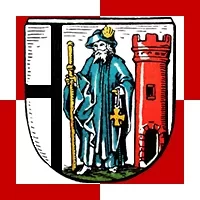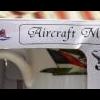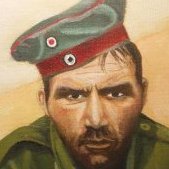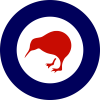Leaderboard
Popular Content
Showing content with the highest reputation on 25/04/24 in Posts
-
Here is my recently completed MiG-15 that was built as part of the 'Baby Boomers' GB using the Eduard 1/72 kit and finished in the scheme of an a/c from 176th IAP, Antung Air Base, Korea, 1951. Build log here: Stuart10 points
-
Hi all, Here is my m3 scout car by zvezda. It’s brush painted in ak third gen od base colour. I used oil paints, ammo enamels wet effects, pigments and homemade mud for the weathering. Added a driver (who looks to be a bit shocked that he’s driving). I made up some stowage. The tarps are the fingers from a nitrile glove, bounded with led wire for straps and copper wire buckles. The scrim is a fruit net and dried moss… sounds odd but works ok. It’s an older kit but went together soundly enough bar me snapping the front axle a couple times! The sun came out in Ireland for one day so took the pics whilst I could. Only just realised I’m missing a front headlight that I need to re attach… if it’s in the box I had it in. I’ll be adding this and the kits below to a diorama set in the west wall/Siegfried line. It’ll be a few months before I finish as I’ve a couple tigers to build for the tiger stgb (if anyone is interested in joining its until end of June.) All comments and feedback welcome. All the best, Paul6 points
-
WV318 started life as an F4 but after an accident was rebuilt as a T7 and in October 1964 was upgraded to a T7A. She was used to train Lightning and Bucaneer crews. One of the last 4 to serve with the RAF she was painted black to commemorate 40 years of the type. Purchased in 1996 by Delta Jets at Kemble she was a regular on the airshow circuit until 2012 when Delta Jets ceased operations. She passed through a couple of owners then ended up at the International Test Pilots School in Ontario and is currently in service there. I had the good fortune to fly her on my 60th birthday, a surprise present arranged by my wife, and 24 years later my heart is still in the skies of Gloucestershire. The model represents her as she was when I flew her with a satin black finish. She was repainted in gloss black shortly afterwards for the Hunter Jubilee. The model was built from the Revell kit with the PJ Productions resin T7/T8 conversion kit. The only significant problem was that the place where you saw the front end off the Revell fuselage appears to be about 2mm too far back which creates a problem as the recess for the front of the wing has to be extended forward to compensate. Unfortunately the PJ forward fuselage had already been mated to the Revell rear section before I found this out. I thought that I had a picture showing the problem but it seems to have gone AWOL. Fitting the vacform canopy was something of a struggle which required some building up of the cockpit sides. The paint finish is Xtrakit 'Night Black' with a satin finish after the decals had been applied. Decals came from an old Xtrakit Hunter set which included a set for the Black Arrows. They are not quite correct for this T7 but were the only set available as far as I know. I had some trouble applying them as they had a tendency to break up. As luck would have it the worst case was the upper surface decals on the wing where part of the outer white ring went adrift. I reckoned that it was better to leave it that way than try to paint in the missing bit. There was a bit of last minute panic when I discovered that contrary to the instructions in the coversion kit this T7A was fitted with a tailhook and I had to make one. One is actually supplied with the kit for the T8 version but in my case the hook had been broken off before I received it (It was secondhand from Ebay) John6 points
-
I built this one for my father in law who served as a UN soldier in Cyprus in the 70’es. The Danes borrowed a number of Ferrets from the Brits. They had British licence plates and Danish flags. The few photos of the real thing shows the vehicle in a redish/sand/brown color. I used a darkened Hataka RAF Gulf War Desert Pink for the painting. It’s the new Airfix kit out of the box. Enjoy6 points
-
Hi all Engine as is in the AIMS set is finished. I have seen some period photos of the aircraft and the cowl supports looked like a solve colour so I added the intake cones and painted them as such. Some weathering of the exhaust stubbs and collector ringvinside has taken place as well as some oil spill/spray on the inside of the cowling. And glued into the cowling I have really enjoyed making this engine, AIMS are certainly to be congratulated on producing such a wonderful engine set, very highly recommended. I might have a look at making the rear cowling supports, not sure yet. Very pleased with this Thanks for looking in. Chris6 points
-
Here is the F-RSIN Viscount 800 finished as V.833 G-APTD of British United circa 1967. Tango Delta started life in 1959 with Hunting Clan which became part of BUA a year later. In 1970 BUA sold her to Arkia and she remained with them until retirement in 1979. I’m a fan of F-RSIN kits generally and their Viscounts in particular. This is my fourth Viscount and as I have said before they are among F-RSIN’s best kits, an easy build within the limits of short run moulding. Lining up all four engines takes a lot of checking and it is necessary to source alternative props since the separate blades and hubs provided in the kit are unusable. My replacements came from Aeroclub and had been in my “bits and pieces” stash for a couple of decades. As usual I filled the fuselage panel lines and did a bit of refining but generally everything was pretty straightforward. The only other point worth noting is that the nose wheel leg is rather vulnerable. My S.O.P. is to attach the undercarriage before applying the decals and I made a small sleeve from thin card held in place with masking tape which kept it safe. Paint is Halfords Appliance Gloss White and Racking Grey with Revell and Tamiya metallics. Decals are by Two Six. Like the Aeroclub props, the sheet was in my stash for years and I would guess it was designed for the S&M kit. Generally the decals fitted well except for the fin. I had to cut the fin decal into individual sections and apply the two halves of the stripe separately. The “BUA” titles looked too big on the F-RSIN fin so I reduced them to 80% using Affinity Photo my preferred (and much cheaper) Photoshop alternative. When I see the model photos I think I might have slightly overdone the reduction but there were variations between individual BUA Viscounts and I can live with the result. Thanks for looking and constructive criticism is welcome. Dave G Just for fun, an F-RSIN Viscount group portrait. L-R: Cambrian/BOAC V.701, Alitalia V.785D, GB Airways V.807 and British United V.8334 points
-
Here is my second build for the 'Boomers' GB. MiG 15, Korea 1951 using the Eduard kit in 1/72. Build Log here: Thanks for looking. Stuart4 points
-
4 points
-
Hey Everyone. As you may recall, I have been trying to challenge myself with attempting more model airplanes and getting myself out of my armored comfort zone. Yes, the guy that "Hates Building Airplanes" has stuck to it and is trying to fall in love. I'm getting closer. I started with the 190A Wurger, then onto the F4U-1 Corsair and now I've tried riding my first Mustang. Again, I know this is probably the most modeled airplane there is and I did my best to achieve two things; 1. to do my first ever NMF and 2. Attempt to do the Mustang the justice it deserves with an appealing to the eye portrayal of this machine. Not sure I achieved either in my first attempt, but it's a good starting off place to learn from moving forward. I chose to try Eduard's Mustang Mk IV, stationed in Italy at the end of the war and part of the "Shark Squadron". I've always liked the shark mouth's on WW2 planes and although I was worried about using a decal for it, it turned out to be the best decal of the bunch. (More on this below). Truth be told, I am not a die hard fan of the Mustang. I think it's beautiful and I understand the significance of it's role in WW2, but as a subject it's not my first pic. (I like the P-47 better...that's next.) But, I decided to enter into a STGB here on Britmodeller (also a first group build for me) for the stang and this is it. We'll see how it goes. I think it's important as a modeler to sometimes do models that are not your first pic, and use them as a learning experience and to challenge your skills in a new way. It's so easy to do the same thing over and over again...kinda like me with Tigers... Anyway, Tiger addictions aside, I gave it a go with this Mustang and it was actually a good experience overall. The Build Not only was this my first stang and NMF, but also my first time doing an Eduard kit. I'd love to say it went well, but alas, it really didn't. I had some monster fit issues with with the fuselage. I guess there are two guide pins near the cockpit that really need to be removed. I didn't know that (why would I) and had to use some serious muscle strength to get it to go. It created quite the warp around the cockpit which of course caused a chain reaction of problems down the line. I was able to get it to work, but it wasn't pretty. Everything else in general went together well. I wasn't looking to do anything crazy, at least not on this build. I'm taking it slow as I ooze into planes. The Eduard details are great and aside from the fit issue, I enjoyed it. The NMF I did the best I could. I've never done one before, so this was a new experience. I'm so used to painting in yellows, greens, and browns. All FLAT. I knew this would be a whole new experience. You can read more about that process below if interested... Then came the DECALS! Oh my word. These of course are the new Eduard "peel film" decals and at first I was both excited and petrified at the process. I watched several tutorials before attempting. I did everything to the letter BUT ran into problems. First, I am a microset, microsol dude. I was out of both. I had decided to try something stronger with Mr Mark Setter and Softer. I was excited as I like Mr anything usually. Yah, they both caused monster issues with the paint. This was of course AFTER I sealed my work with MRP clear as well as FUTURE, which I thought would guarantee no issues. Wrong, even after 24 hours of cure time, when I would apply Mr Mr, I would get paint issues. Blotches of residue. No problem, just use some water and wipe away. Yah, no go. I had to sand back, repaint with the decals in place. Only thing that saved me was some good AB skills. Very frustrating. After I got that resolved, I let the decals dry 24 hrs. OK, so just peel and remove yah? WRONG. Although I could get the film to give way, it of course came with the decals in tow. I had to make a decision, try to finesse my way through or kill the removal and make do with the film on. So, I kept the film on. I knew proceeding forward with all the decals would guarantee ongoing issues. I even had a test subject with a spare decal, large marking. Still had the same issue. So, I had to go back to Mr softer and work the film back on. Again, now causing paint issues, again. UUUUUUGGGGHHHHH. I did finally get to some middle ground I guess. BUT, I had to forgo using all the stencils. It was just too many opportunities for problems. I used vital ones, and had to leave the rest off. I'm OK with it really. I know some modelers will scoff at the idea, but to me, perfection with a model is not mandatory if you can enjoy the final result regardless of faults. That's just me. This is a hobby. In any case, this is my Mustang. Mistakes and all. I have fallen in love with trying NMF and am already preparing to do a Tamiya P-47D in NMF next. I have already bought decals for it as I know Tamiya is really not the best. Hope you enjoy the pics and please feel free to comment, critique, and smash if needed. Cheers, Graeme3 points
-
Good morning GStreet I totally agree with Gerard you have done a very good job on your first Gb ... You still have plenty of time to build another Mustang .. Best regards Patrice3 points
-
Dear members, I like to show my recent rebuild of my very old Mack AC, I build this model in the late eighties and it spent all those years in my cabinet. On internet I found some photographs of restored Mack AC trucks which had a more modern look not surprisingly, the AC series were build during many years after WW1. So after a critical look at my model, I decided that it was time for an overhaul. How it was : After carefully taken apart I made the chassis about an inch longer, built a closed freight "box " , modified the front fenders and a new cabin, with closed doors. Some time ago I had made some resin cast tires, which I could use on this model. I printed some decals on my PC, but later on I was not happy with the results, last weekend I designed, drew and printed new ones, which I like a lot better. I made up my own transport- company, :-), so I can use the design for later models. Here the pictures how this modification turned out, I hope you like it: Kind regards JohnHaa3 points
-
The Dorawings kit is a significant step forward in the products from outside the mainstream. Most of it went together very well. Most problems were self inflicted. The only significant problems with the Dorawings kit involve the nose section. That long nose probe is moulded as part of the fuselage nose and my first reaction was that it was unlikely to survive the building process. This was borne out shortly after assembly commenced when I realised that the end had gone missing and there was no trace of it so I did not know exactly how long to make the replacement. Repair was not an option. Even if possible it was bound to happen again so a replacement was made using brass tubing of various diameters but leaving the thinnest off until painting was about to start. There are several vanes supposed to fit on the probe. These are made from PE and there was no way my fingers could get them in position without them pinging off across the workbench. If anyone knows how to do it please tell me. The canopy is another problem. There were fitting problems but the real trouble for me was the masking. I could not get the masks for the window in the roof and the 'portholes' to stick in position and replacements had to be made without great success. I think that it spoils the look of the whole model. The NMF is Alclad applied over gloss black. After applying the NMF there arose a problem with the decals. See here for details https://www.britmodeller.com/forums/index.php?/topic/235139192-dora-fairey-fd2-decal-problem/ The P1a was built many years ago using the Aeroclub vacform fuselage and the rest from an Airfix F3 but I thought that it should be included here for comparison as both originated at almost the same time. John3 points
-
Hi There are two more Tigers done. 33) DH Havilland DH 82 RCAF 4108 N 6 Elementary Flying Training school Prince Albert, Canada February 1939 34) DH Havilland DH 82 RCAF 1108 N 34 Elementary Flying Training School Canada 1942 Cheers Santiago3 points
-
3 points
-
3 points
-
Picked up this little set recently for the magnifer gt40 so hopefully soon should have a detailed version of ken miles' lemans car from 66 SN3 points
-
3 points
-
3 points
-
3 points
-
3 points
-
Hello model builders, Well, work was slow over the last few days, so went about paint and weather in earnest, and now have a pretty rundown looking truck, which will hopefully look good hauling the equally decrepit drill rig. Unhappily, it's foggy here today, so sort of a dark day, which is relevant to me because my place has a few really big skylights - hence, sunny day = bright place; cloudy day, darker place, and pictures! I usually don't include pics of individual project elements, and despite the poor lighting, well, you'll see the engine and tandem rear end: I'm particularly happy with the photo directly above, as despite the headaches this rear suspension caused, I like what it looks like now! For at least right now, all of the added bolts look the part! With the poor lighting, it's hard to tell that the engine has several shades....oh well.....😄 And on to the cab and body panels dryfit: The protype I used happily includes ample rot and grime, and the fancy stripes! I must say, I was quite surprised to see how well the stripes worked - very little color bleed and uniform spacing of the lines - and then, well, some weather Now, the bigger victory: What a treat! it sits flat! On all ten! Now, back to the cab: Which only leaves the bed - it looks ok, but again...the light! Not that good for taking pictures of models.....😄 I'll mount the rig onto the bed, before mounting the bed onto the truck. What you can't see above is that the bed has some D rings for securing loads, and the drill rig has some too, so the plan is to chain the two together - which I suspect would be awful with the bed on the truck Alright guys, thanks for having a look - Cheers Nick3 points
-
Allright, adjusted, asap, and easy peasy, as mentioned very forgiving mediums for this. It will do just fine for me.3 points
-
Hello all! This is my new model. The excellent quality set As an addition I used 3d decal from Kelik. Painting Tamiya color. Weathering oil paint washes and watercolor pencils.3 points
-
Hello Everyone, Here is my build of the Airfix 1/72 Red Tails P-51 Mustang aircraft Lollipoop. This was a very fun little build, hand painted with Humbrol acrylic paints. Here are the photos. All the best, Rick3 points
-
I have attached the undercarriage and the canopy, removed all the masks. I am very pleased wit the paint job. It might be my best yet. The underside is looking good. I have a couple of painting touch-ups...nothing actually anyone but me would notice. Then it's decal time all around! I'll start with the stencils of course. --John3 points
-
Hey Everyone. My attempt at the Eduard 1/48 Mustang Mk. IV and my first NMF project and first ever Mustang. It was definitely a challenge and learning experience. Build Log is Here (sorry so short, I'm not a good logger) and Ready for Inspection is Here. Hope you enjoy it! G3 points
-
Yes, it's basically for bomb and rocket aiming. You put the target under the leading edge of one of the stripes depending on entry height, and then turn in with a given speed. Here's the manual: https://archive.org/details/air-forces-manual-no.-64-fighter-gunnery-firing-rockets-dive-bombing-1-may-1945 And if you just want to get a sense of how to apply it from the cockpit, this will do it for you2 points
-
Master Box 1/72 Mark I Male “Special Gaza Modification”, built out of the box. The kit was actually a pretty easy and enjoyable build, but is sadly let down by the awful rubber band tracks that simply refused to hold paint, nor respond to traditional adhesives. Thanks for looking.2 points
-
After chasing a possum from the house this morning, fun times that. Poor bugger fell down the chimney and couldn't get out. I have been chipping away at the little mech. I need to take a break as my eyes and will to live are going. No it's not that bad I just find I have only a limited amount of imagination and after a bit all my chips look much the same. I'm not good at this kind of weathering so this is good practice. I think he at least look good on his base. Lots more stains and grime planed but he's looking a bit more lived in. Thanks for looking in. Dan2 points
-
Hi everyone, hope you don`t mind me bothering you with some photo`s of the latest addition to the Pacific collection My attempt at Hasegawa`s 1/48 scale `Oscar` Late Version Finished in the markings of Captain Yukichi Kitakoga of the 54th Flight Regiment Built from the box contents and just added the usual, belts, wiring harness, brake pipes and aerial wires For a simple aircraft, Mr Hasegawa managed, I think to make it a bit trickier than it needed to be, especially the 2 part undercarriage legs and cowling attachment Also the separate wing tips also include part of the ailerons which are tricky to clean up. I know the flaps shouldn`t really be deployed on the ground but I couldn`t be bothered to try and get them to fit closed....... ....and in any case I like the look of them as they are. Decals were the kits and weren`t any bother. Thanks for looking, hope you like Cheers Russ2 points
-
Congrats on a fantastic result, and on completing your first GB! Both are fine achievements! Excellent result with the NMF, and hope to see you jumping into some of the other GBs. Gerard2 points
-
Here's the breakdown: Royal Class - the very first limited edition box from the new kit family, filled with PE, resin parts, extensive decals sheet (usually 12-14 markings), sometimes even more extras and a little bit of magic straight from the local unicorn Limited Edition - box filled with PE, resin parts and extensive decals sheet (usually 12-14 markings), in case of Dual Combo you'll get parts (and extras) for two kits ProfiPack - box with colour PE and masks, decals usually with 6 markings Weekend - no extras, decals usually with 4 markings2 points
-
2 points
-
There were two babies in the hospital nursery. The first one said "Hi! I'm a little girl baby! The second one said "Hi! I'm a little boy baby!" "How do you know you're a boy baby?" "I'll show you". He reached down, grabbed his nightgown by the bottom and pulled it up over his head. "See? Blue booties!"2 points
-
After the day I had at work today, I needed to relax. I decided to start pre-shading this bird. I'm reminded of a line from the John Wayne movie "Big Jake": "Oh, mister. You shouldn't of ought'a done that." It looks like it was done by an epileptic baboon with a bad case of the DTs! Definitely not an example of my best work! 😳 I think I over thinned the paint. I was using a double action brush at about 10 psi, trying to get in close enough to see what faint panel lines there are on this kit! Maybe tomorrow I'll flip it over and do the top. Never try to do detail work when you're frazzled.2 points
-
I think that the Aviation History article (post 2) and the Arma article are as good as you are going to get. It's enough detail to build 02 a Yak-1 and 23 a Yak-1b.2 points
-
Here is my take on the german Sd. Kfz. 222 scoutcar. A nice kit from hobbyboss. A lot of nice details, crisp moulding of the parts and overall a joy to build. The figures are from Warfront. All comments are welcome. Thanks for stopping by and taking the time to look.2 points
-
2 points
-
2 points
-
My reference to modelling sanity referred to the Gordon Bennett project, which involved building 5 tractor monoplanes and only one pusher biplane (ie a real aeroplane). Modellers who know me know that IMO the only real aeroplanes are pushers, preferably with a boom arrangement at the rear. The more rigging and the more ungainly the aircraft looks, the more I like it! Yes I am mad! P2 points
-
So, some photos. For this build I'm using an Eduard kit, one of the three I have out of this cool boxing. Sprues from that set are well known so I won't bother sharing photos of those. I'm stealing marking decals from this kit. Simple scheme (the lower one):2 points
-
Another two-for-one with this post. These were both old Novo kits from around 1979 given to me by the same person who gave me the two Karas I posted earlier, with the same stipulation: build them, paint them and give one back. There were no problems with the fit of any of the pieces aside from the clear parts, and the decals were in surprisingly good condition. As per usual, I used AK Real Colors as the paint for both of them. This was the first time I've put invasion stripes on a plane, and I think the end result looks good, but I will make the black lines a bit thicker next time. I also should have put the stripes on the wings closer to the fuselage, but the underwing rocket launchers were a real pain to mask off, and I ended up cheating. ----------------------------------------------------------------------------------------------------------------------------------------------------------------------------------------------------------------------------------------- Here are a couple of Fairey Fireflys: a British-made carrier-borne fighter, sub destroyer and reconnaissance plane. One of these depicts a British Firefly in the Fleet Air Arm, sometime around the Overlord landings; the other was my attempt at replicating the RCAF version that the Canadian Warplane Heritage Museum currently has in its collection. The Firefly began production in 1940 with its first flight in 1941, and its official deployment starting in 1943. It used the Rolls-Royce Griffon engine (used also by later Spitfires, Seafires and Tempests), and the two versions I did are equipped with cannons and underwing rocket projectiles. Although used in every theatre (notably seeing some action off the coast of Norway against the German battleship Tirpitz), the Firefly was mainly used in the Pacific against Japanese targets. It was also the first British-made Allied plane to fly over Tokyo during the war. After the Second World War, the Firefly continued to be used by the Commonwealth nations, and was prolific during the Korean War.2 points
-
Using this post to upload from HobbyPhotoHost for the first time, so let me know if there is any problems. This is my S-61A Sea King in Danish markings. The model is Cyber Hobby’s 1/72 S-61 with Whirlybirds conversion set and decals. I also scratch build the interior, but not much can be seen on the finished model. Painting using acrylics. Enjoy Drakendk2 points
-
Hello Everyone, Here is my build of the Revell SR-71 Blackbird kit. The Blackbird was the fastest air breathing aircraft in the world, capable of Mach 3. It was a very simple build and paint job. Hand painted with Revell paints. Here are the photos. All the best, Rick2 points
-
2 points
-
1/6th of the way round the sun since the last update here and I'm shamelessly blaming interstellar debris as an excuse... (This - interestingly enough - from an issue of Flight magazine published in the early 50s.) Work on the Wasp has in fact been continuing in the background of the business of living in these times, so best to recount some of the key developments before what's happened and why get lost in the fog of the now. Essentially I've been gradually working my way through the plethora of parts which amassed in CAD form over the past few months and which were long-overdue for translation into solid objects. Due to the combination of extreme thin-ness and compound curves on things like doors and so forth, this required a lot of troubleshooting with resin types and orientations in order to maximize part strength and avoid striated surfaces due to poor orientation of such curvatures in space. It also took a lot of customization of support types in VDT, which I have to say has proven itself a godsend for the variety of shapes involved here in terms of facility. Here are the final results of all these various print runs en masse: And lest anyone gain a false impression that over time you ever get good enough for your efforts to succeed first time on more than a single part, this rarely rarely happens as the image below demonstrates in terms of the the level of failures required to iron out flaws and reach that point above: The usual caveat applies to the following images in that they are shown freshly printed i.e., resin washed off but none of the print-support stumps sanded from surfaces. The design of the rear wall of the cabin was revised in Fusion compared to the printed version shown here in previous updates, in that it now has the angled rear-window panels on either side of the central panel integrated into the one design: It turned out to be feasible in the end to print these as one component and will, I think, prove a more accurate solution than trying to glue them on separately at the right angle during assembly: All of that surface details remains present in the 1/32 version shown below as well, so my guesses about minimum feature size in the 1/24 version to survive scaling down seem to be holding up pretty consistently across the model so far: Pretty much the same for the doors; both front: - and rear: - retaining equal levels of detail when scaled down to 1/32: Door pillars too will look even nicer with the naviagtion lights installed later: Too fragile to reproduce in 8k resin, the sliding windows for pilot/obervers had their frames printed using eSun Hard Tough resin: Again the 1/32 version of these also survived the Alice in Wonderland treatment and printed as well. Amongst a number of other components requiring the black eSun resin for strength were the jury struts onto which the floation gear attaches as the front: On the 1/24 version shown here you can see from the translucency down the sides just how thin the edges of that I-beam shape are. In this view below the translucency also betrays how thin the walls of the recess which the float gear struts fit into are as well - even after I added a small reinforcing panel inside of there on either side: These features also reproduced at 1/32 quite pleasingly: - however the walls of the strut recesses were just so molecularly thin at 1/32 that it necessitated them being largly filled in as a compromise between being present but not causing the print to fail in those regions (as it had done in tests): Driveshafts from main to reduction gearboxes were also done up in black stuff as they'll be helping to support and align the entire engine/gearbox asssembly later on: The rear cabin framing at 1/24: - and at 1/32 both required the stronger resin to avoid breakage during kit assembly: I wasn't sure if the door handles (on the right end) would work at 1/24 but they did: More improbably however they also printed at 1/32 using the smallest feasible tree support I could devise in VDT: Enormously pleased with how the nose parts came out in the 8k resin at both 1/32: - and 1/24: Some residual striation around the drain holes (necessary to avoid suction issues during printing) on both to tidy up at the same time the holes are filled. Detailing along the top surfaces was everything I hoped it would be, despite my heavy handling during support removal resulting in some breakages along the cheek window guttering (though these are easy enough repaired with some tape and the UV laser): Underside and RADALT enclosures: The weapons loadout had some attention in the form of prints for the Mk44&46 torpedoes: Mk.44 first - this performed nicely at both scales: I wasn't worried about support structures for that annular feature at the rear on the 1/24 scale: But VDT came through again in allowing for some very fine structures to support it at 1/32 scale without causing undue damage to the torpedo casing in the process: I just noticedthere's still a revision to do there at 1/32 as you can see the supports for the fins themselves weren't strong enough. The propeller assemblies of the '44 at the smaller of the two scales: Mk.46 behaved itself equally well at both scales, with no features failing: Parifcularly pleased with part definion on the props for both sets, 1/24 looked nice: - yet 1/32 turned out far less of a problem than I'd feared in terms of effective support processes: The same story regarding all the fiddly detail on the carrier racks and sway braces which took so long to do up in CAD: in printed form there were no features missing or compromised at either sale (shown here at 1/24): Suspension bands on the torpedo bodies also nice and crisply rendered: Also added to the pile at this time were the landing light assemblies and transponders in both scale: Fairing seen here in 1/24: With no detail absent from the 1/32 version in relation to its larger cousin: For reasons which as modellers I hope you'll understand, I couldn't resist doing a mockup of the Mk.46 torp at 1/32nd scale the other night, 'just to check' that the parts fitted together Ok: Over the weekend I sat down and drew up a snag sheet for all the parts still needing to be designed in CAD: The bulk of this as you can see involves the cabin & cockpit interiors, to whit I have the reference mosaics done up ready to start preliminary sketches for those areas: Particular thanks need to go to @Ex-FAAWAFU, @Terry1954, @Anthony in NZ for imagery of the interiors which they've shared with me from their collections that will prove invaluable in the next phase, as well as all those positng stuff in the BM Walkaround for the Wasp. Thanks for reading as always and hoping this finds all here in good form. Tony2 points
-
Happy day spent applyng decals. They look a bit too bright so I might give them a coat of smoke or thinned black to tone them down.2 points
-
This is my Airfix Vickers Valiant built as a machine from 49 Squadron based at RAF Marham in 1963. The build was pretty straightforward though as mentioned in the thread there are reputedly a number of errors in the moulding. The main problem was in fact covering such a large area with white paint, particularly as I was using enamel and not inclined to use my airbrush, but I got there in the end, though it could no doubt be better.😄 From the angle of the last pic above the leading edge of the wing actually almost looks like that of the H.P. Victor! Although always considered to be less technically advanced and something of an "insurance" against problems with the Victor and Vulcan, the performance was actually pretty good, but as is well known fatigue problems with the wing spars doomed it to a short service career - Vickers always blamed it on the Air Ministry specification insisting that they use a particular alloy (DTD683) which turned out to be prone to cracking. As with the D.H. Comet, fatigue was a bit of an unknown factor back in those days. Pete2 points
-
I haven't used Xtracolour for a long while so maybe yes. I often use Mr Color #40 German Grey as a scale black but #125 Cowling color is also a blue black. Looking at the pictures I took of the real thing at Dayton USAF Museum, the overall black is actually a patchwork of shades. The cockpit canopy especially is a shade of grey so I mixed some EDSG into the black/blue mix and high lighted a few panels where appropriate. This is a bit overdone since the final post decal varnish will even it out I also silvered the leading edges with some "Rub & Buff" art paste. I hope these decals are better than the Vautour otherwise it'll be getting a coat of Ablative white!2 points
This leaderboard is set to London/GMT+01:00





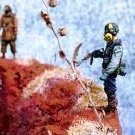


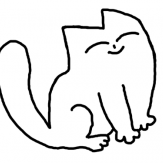
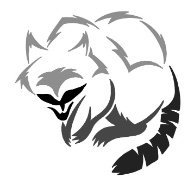
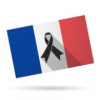
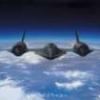


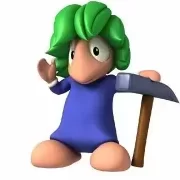


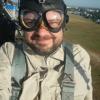



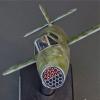
.thumb.jpg.d17ff607fc7e89ed057e63fcb6f2a888.jpg)
